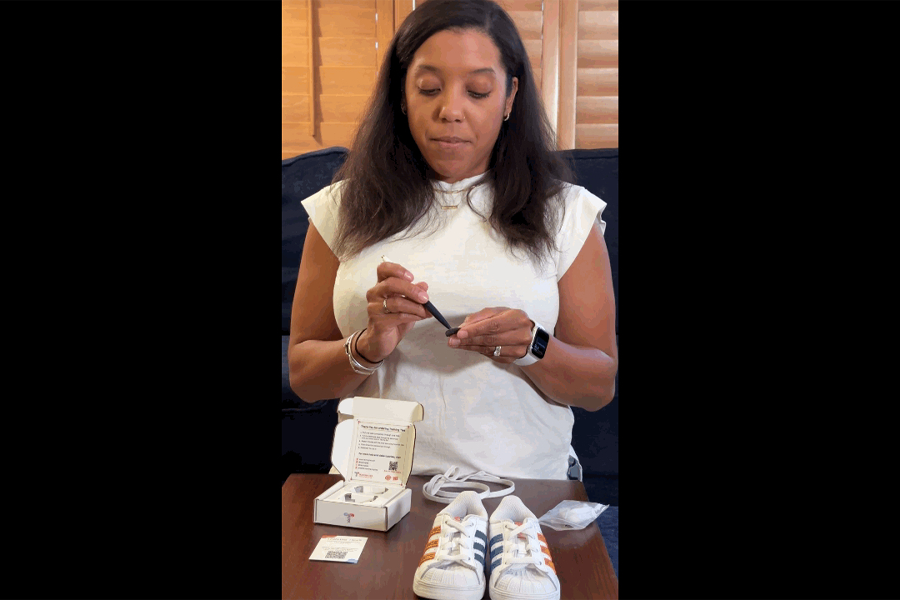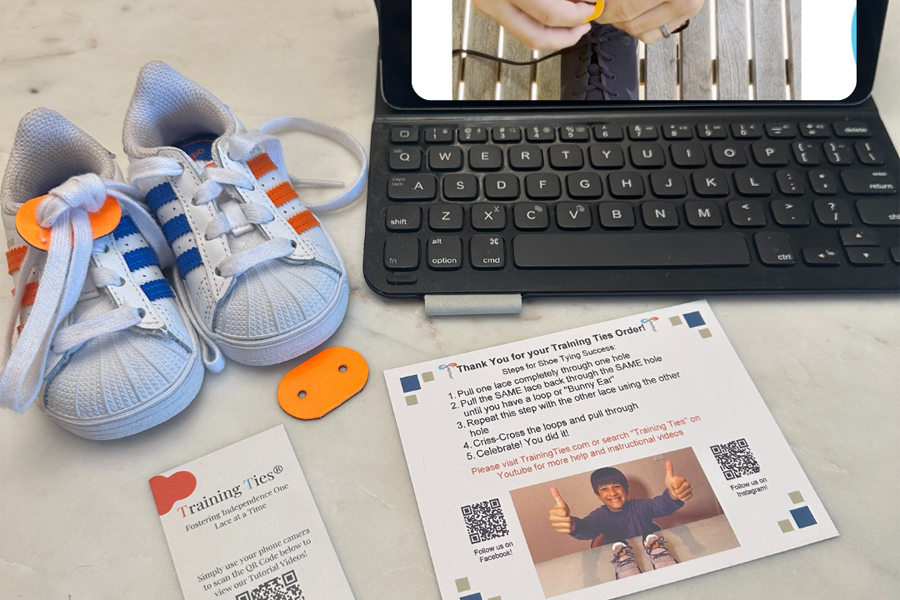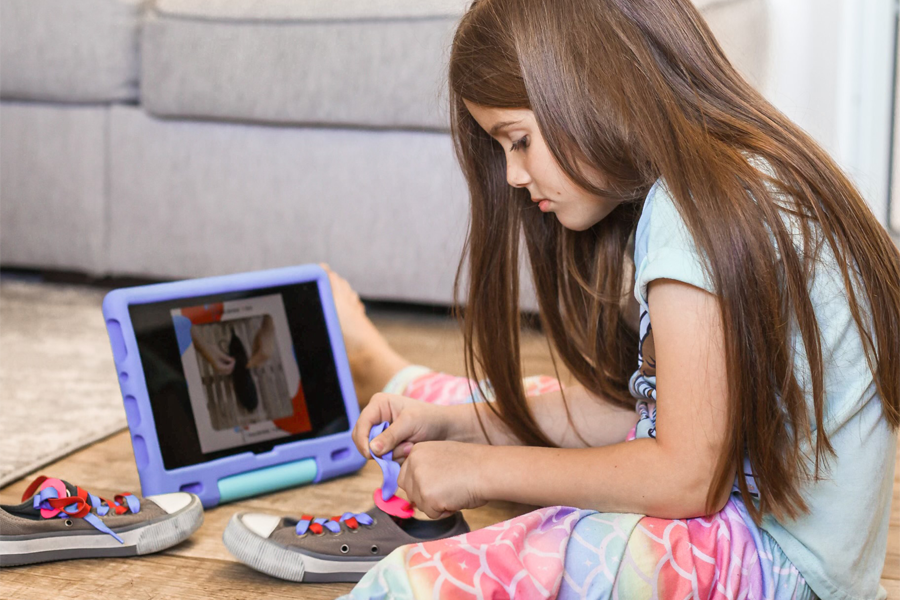How it Works

STEP ONE
GET A PAIR OF SHOES W/ LACES
Training Ties® are one size fits all. All you need is a pair of laced shoes (make sure the laces have the plastic Aglet at the tip).

STEP TWO
TEST YOUR TIES
Shoelaces come in all different shapes and sizes.
Training Ties® Are made of vegan leather with holes small enough that they fit snugly on smaller kid’s laces, and can be stretched to fit thicker laces as well. Because of the variation in lace sizes, we highly recommend caregivers test the laces on the Ties (and gently stretch the hole with the tip of a pen if too snug) before setting up their learner to try

STEP THREE
SET UP YOUR LEARNER
Shoelaces come in all different shapes and sizes. Every Pair of Training Ties® come with a printed tutorial card. The QR code on the card links to our step-by-step video tutorial. Set up your learner with a pair of shoes, a pair of Training Ties® and the tutorial queued up on a device. We recommend caregivers stay close by but give space and silence so learners can try, being available in case help is needed. We also recommend learners start off the foot first to get the hang of the process.

STEP FOUR
PLAY TUTORIAL AND LET YOUR LEARNER TRY INDEPENDENTLY
Every Pair of Training Ties® come with a printed tutorial card. The QR code on the card links to our step-by-step video tutorial. Set up your learner with a pair of shoes, a pair of Training Ties® and the tutorial queued up on a device. We recommend caregivers stay close by but give space and silence so learners can try, being available in case help is needed. We also recommend learners start off the foot first to get the hang of the process.

STEP FIVE
I DO, WE DO, YOU DO
If your learner struggled with using Training Ties® on their own in the last step and asks you for help, we recommend taking an “I Do, We Do, You Do” approach. First, you slowly show them how to use Training Ties® on their shoe with you doing every step of the process yourself with the learner simply watching. Then, you say “ Now, let’s do it together” And you encourage them to do each step with a bit of help from you only when asked. Then, once you’ve successfully done it together, encourage the learner to try alone with you simply watching and not helping at all.
